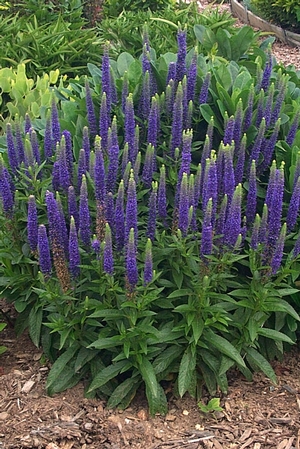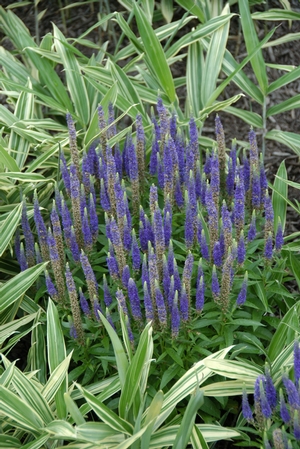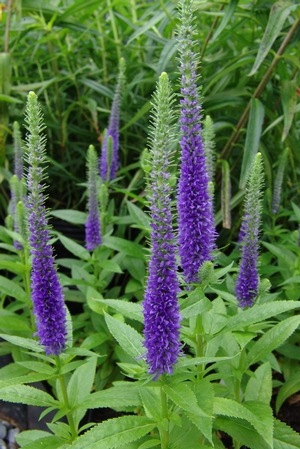Veronica spicata 'Glory'
Common: speedwell — PP18932Veronica spicata 'Royal Candles' PP18932 - 72 per flat
- Height: 12"-15"
- Spread: 12"
- Spacing: 12"
- Hardiness Zone(s): 4-8


Veronica spicata 'Royal Candles' PP18932 - 72 per flat


Deep blue-purple spikes are decidedly upright and plentiful. This variety is compact and slowly spreading. Superb!
V. spicata prefers average to moist soil with excellent drainage in full or part sun. This perennial spreads by a creeping rootstock, but is not invasive. Propagate by seed and terminal or root cuttings. Deadhead to prolong blooming season. Best used as a border, meadow or rock gardens.
The genus Veronica includes some of our most beautiful native flowers, the Speedwells, which differ from the other British Scrophularicece in having only two stamens, which project horizontally from the rotate, or wheel-shaped corolla, which has only four unequal spreading lobes, the lower segment being the smallest, the two posterior petals, according to the theory of botanists, being united into one large one. The numerous species found in England have generally blue petals with dark diverging lines at the base, though in a few cases, pinkish flowers are found. All the species of Veronica possess a slight degree of astringency, and many of them were formerly used in medicine, some 20 of them have been employed as drugs, those with the chief reputation being V. chamcedrys, V. officinalis, and V. beccabunga, all natives of Great Britain; the American species V. leptandra, now known as Leptandra veronica and another species, native to Asia Minor, called V. peduncularis (Bieb.) or V. nigricans (Koch.), the root of which is used there under the name Batitjoe. The name of this genus of plants is said to have been derived from the Saint; others say it is from the Greek words phero (I bring) and nike (victory), alluding to its supposed efficacy in subduing diseases. (https://www.botanical.com/botanical/mgmh/v/veroni07.html)